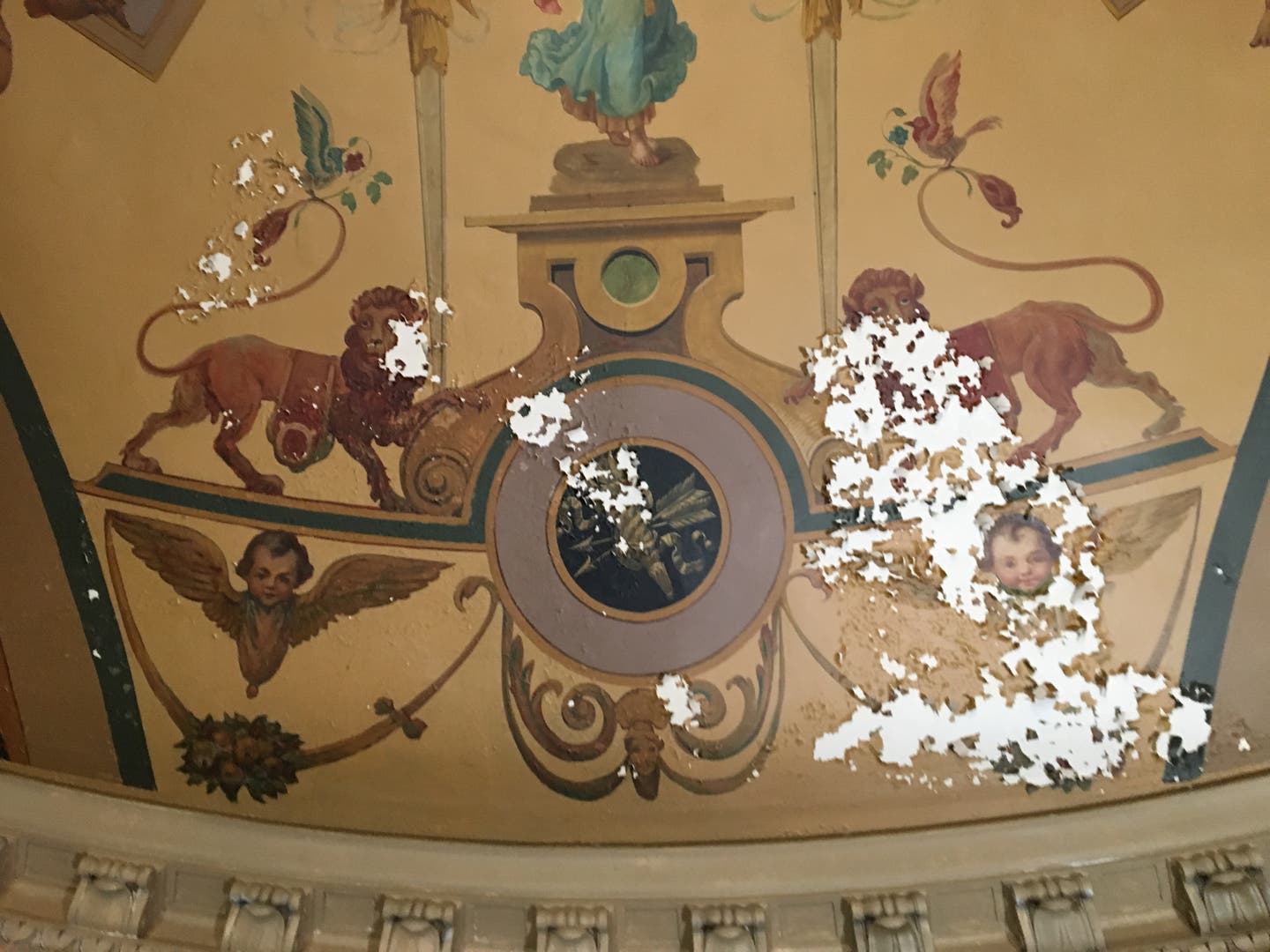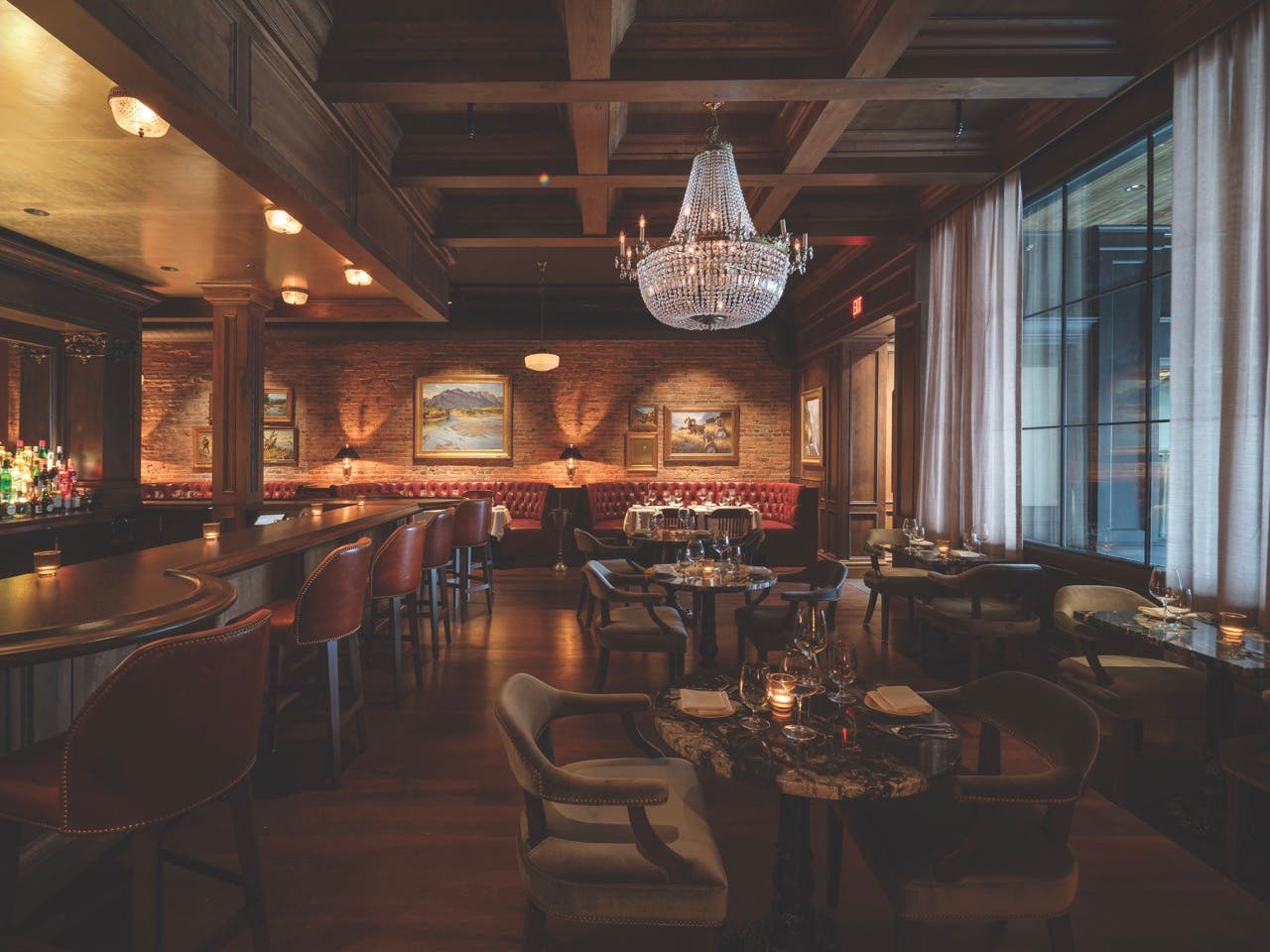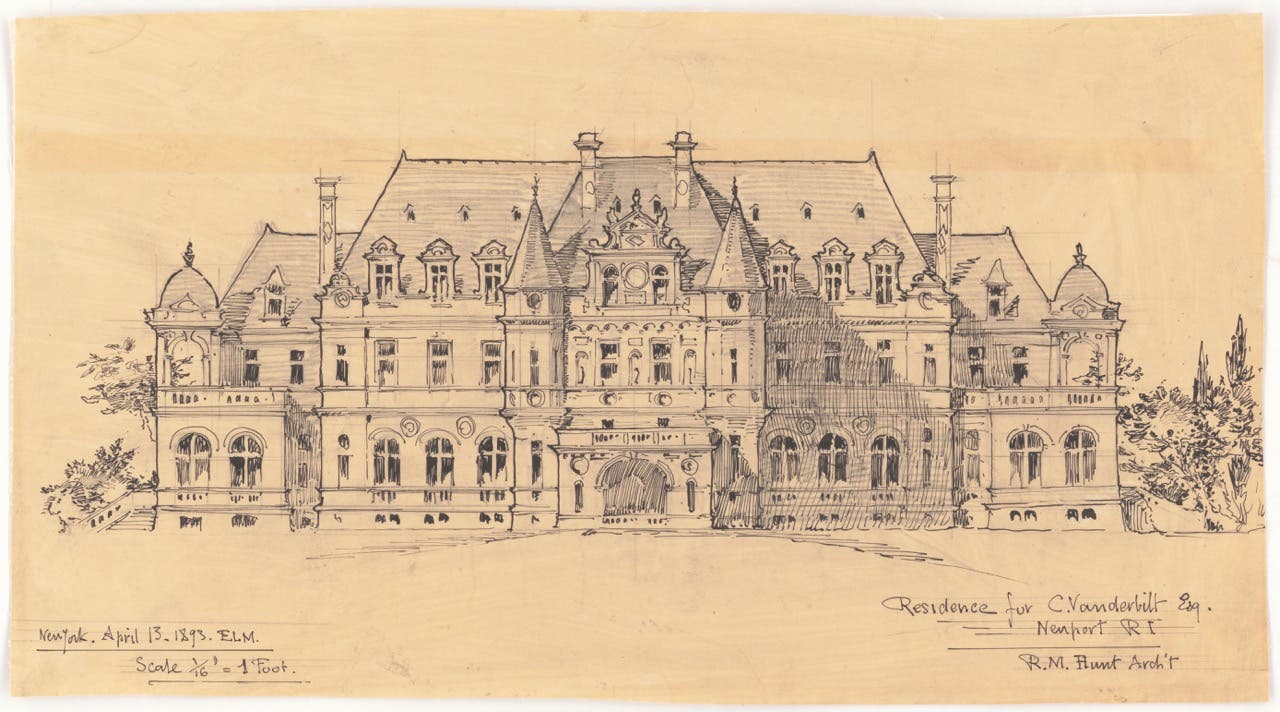
Features
Harmonious Hall Reprise
Good work leads to more good work, as the saying goes, and it’s hard to find a better example than the rotunda of the famed Steinway Hall building in New York City. According to David Riccio, managing principal at John Canning & Co., “We were first brought in to work on assessments of the plaster and decorative paint, and that led to a much fuller fine-art conservation project.”
The rotunda is the heart of Steinway Hall, the home and showcase of the legendary piano manufacturers Steinway & Sons, completed in 1925 by renowned architects Warren and Wetmore. Both the building and rotunda are designated New York City Landmarks. “Being astute businessmen and marketers, the Steinways strategically placed their building across from Carnegie Hall to attract artists, musicians, and educators to audition their pianos,” he explains, “so as the reception room, the rotunda finishes are exquisite, with fine artwork on the ceiling.” The walls are treated with sophisticated, subtle glazes and textures, he says, and high-relief plaster with faux marble effects. “When first decorated in the 1920s, it was carried out with the highest caliber of craftsmanship one could find in the United States at that time.” Originally a commercial-use building, Steinway Hall is now residential as part of the new development of 111 West 57th Street, though the historic rotunda will remain a retail space.
Unfortunately, until new owners JDS Development Group began restoration, the rotunda suffered water intrusion and minimal upkeep for some 15 years. “Our initial observation of the artwork conditions were tragic,” recalls Riccio. Adds fine arts conservator Rachel Rodrigues Gilberti, “I think there were attempts not to conserve but just prevent the finishes from deteriorating further.” The scenic paint layers in particular were covered in many layers of shellac applied merely to ensure they stayed put.


The space is effectively mixed media. “The allegorical four main panels in the dome ceiling are all painted on canvas,” explains Gilberti. This method saved time and effort because artists could work in their studios then adhere the canvas back at the site. “You never had to build scaffolding for the artists; they could work in the comfort of their own studios.” Painting on canvas then shipping became standard practice, with many works coming from artists in Europe. “In this case, however, Paul Arndt, the artist, was a New Yorker and local.”
As a result, the conservators faced two separate types of substrates and treatments: oil-painting-on-plaster and oil-painting-on-canvas. Since many canvases had been repeatedly shellacked over, they had completely changed the color and atmosphere of the environment. “When we first arrived, everything was very dark, very subdued. In some panels you couldn’t actually see part of the scenery,” says Gilberti. Fortunately, shellac is soluble in denatured alcohol so, with careful applications of alcohol on a swab, she was able to remove the varnish. “Once we started removing the shellac, all of a sudden the colors as originally applied appeared extremely vibrant, as if something lit them up.”
The integrity of the panels themselves ranged widely. “The four large-art main panels were in fairly good condition, however, the smaller panels, some medallions, and a few lunettes were in varying states of disrepair due to water damage,” explains Riccio. Water infiltration probably pooled in these areas, and ultimately, became a structural problem. “The water infiltration caused efflorescence of the plaster substrate, which, in turn, was the primary cause for paint delamination.” The conservation treatment then required spot consolidation to stabilize the paint layer and re-adhere it back to the substrate or plaster. Using a brush or injections, the restoration team carefully applied adhesive in or surrounding cracks, in areas of paint loss, and in the peeling paint.
The canvas panels fared better. “It’s often possible to remove and re-attach the canvas,” says Gilberti, “but at the rotunda this was unnecessary because the plaster was sound underneath.” In a way, the canvas protected the paintings, so they injected and re-adhered many of them. “The canvasses were also anchored to the ceiling with tacks—a kind of belt-and-suspenders attachment—so even where the glue failed, the tacks held the panels in the ceiling.”
One of the lunettes, however, was left as-is as a window to the past. “The original was so deteriorated that, were we to remove the different later finishes, there would have been very little left.” In fact, the company deliberately leaves untouched swatches of finish as a historic record for future conservators.


What took everyone by surprise, though, was the faux marble in arches and entablatures. Created to appear as black marble, green marble, and white marble with black and gold veins, the illusion is so convincing no one from owners to preservation experts suspected they were paint over plaster. “In fact, when we came on board,” recalls Riccio, “we were asked to develop a marble cleaning program.” Luckily, the faux marble survived in fairly good condition. Some areas had paint and ground loss, which were in-filled and in-painted, and the entire area was surface-cleaned.
“What’s interesting for Canning & Co. about Warren and Wetmore is that, a few years ago, we were fortunate to conserve the sky mural in Grand Central Terminal,” the architects’ most important and well-known work. “Now it’s been an honor to conserve the murals at the Steinway Hall building, so it’s really a point of pride.”
Gordon H. Bock is an architectural historian, instructor with the National Preservation Institute, and speaker through www.gordonbock.com.








